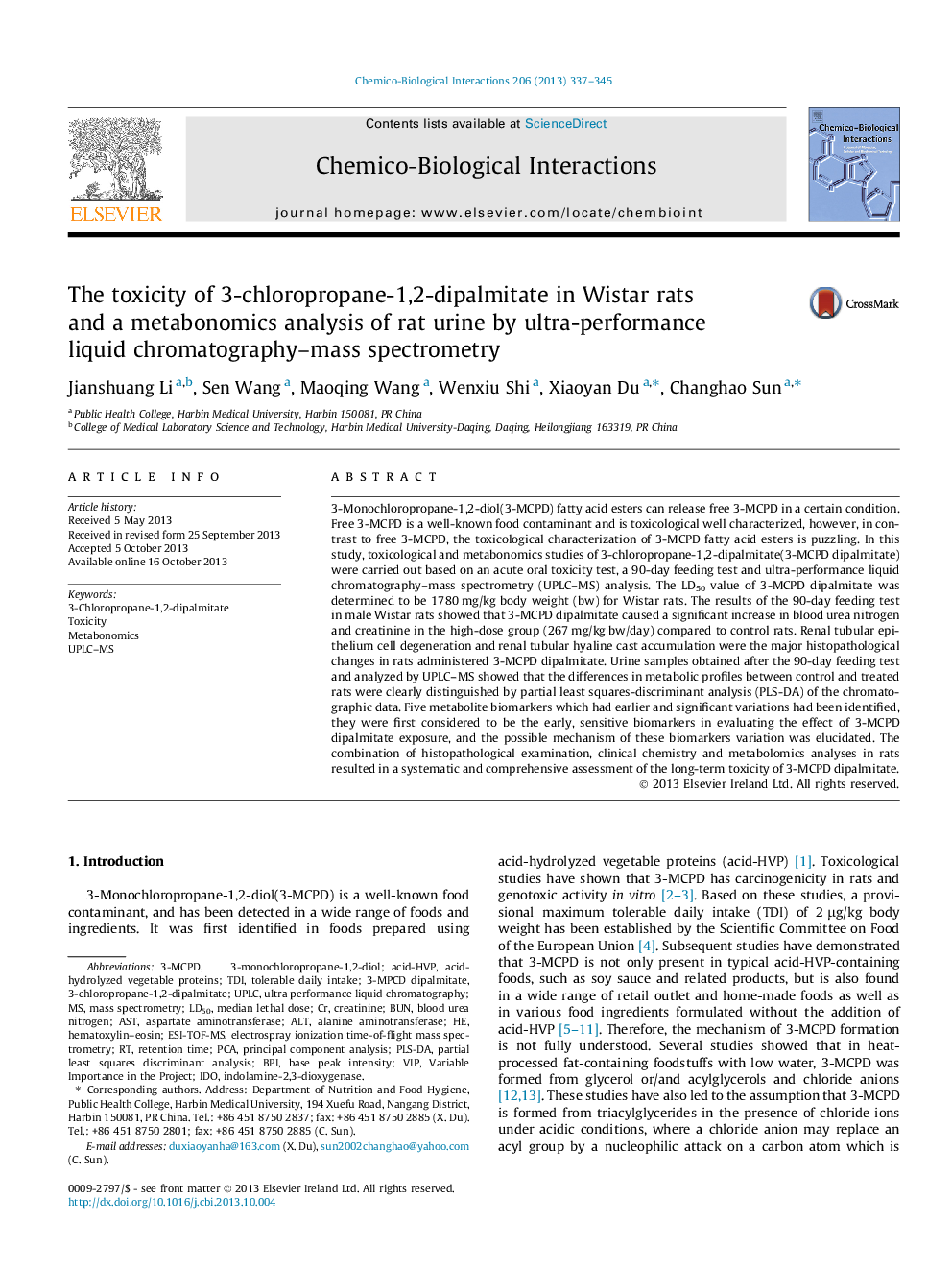| کد مقاله | کد نشریه | سال انتشار | مقاله انگلیسی | نسخه تمام متن |
|---|---|---|---|---|
| 5848133 | 1130137 | 2013 | 9 صفحه PDF | دانلود رایگان |

- The LD50 value of 3-MPCD dipalmitate on Wistar rats was first reported.
- The metabonomics analysis of urine of 3-MPCD dipalmitate-treated rats was done by UPLC-MS.
- Several sensitive substances to 3-MPCD dipalmitate exposure were found and considered as biomarkers.
- More systematic toxicological information about 3-MPCD dipalmitate was obtained.
3-Monochloropropane-1,2-diol(3-MCPD) fatty acid esters can release free 3-MCPD in a certain condition. Free 3-MCPD is a well-known food contaminant and is toxicological well characterized, however, in contrast to free 3-MCPD, the toxicological characterization of 3-MCPD fatty acid esters is puzzling. In this study, toxicological and metabonomics studies of 3-chloropropane-1,2-dipalmitate(3-MCPD dipalmitate) were carried out based on an acute oral toxicity test, a 90-day feeding test and ultra-performance liquid chromatography-mass spectrometry (UPLC-MS) analysis. The LD50 value of 3-MCPD dipalmitate was determined to be 1780 mg/kg body weight (bw) for Wistar rats. The results of the 90-day feeding test in male Wistar rats showed that 3-MCPD dipalmitate caused a significant increase in blood urea nitrogen and creatinine in the high-dose group (267 mg/kg bw/day) compared to control rats. Renal tubular epithelium cell degeneration and renal tubular hyaline cast accumulation were the major histopathological changes in rats administered 3-MCPD dipalmitate. Urine samples obtained after the 90-day feeding test and analyzed by UPLC-MS showed that the differences in metabolic profiles between control and treated rats were clearly distinguished by partial least squares-discriminant analysis (PLS-DA) of the chromatographic data. Five metabolite biomarkers which had earlier and significant variations had been identified, they were first considered to be the early, sensitive biomarkers in evaluating the effect of 3-MCPD dipalmitate exposure, and the possible mechanism of these biomarkers variation was elucidated. The combination of histopathological examination, clinical chemistry and metabolomics analyses in rats resulted in a systematic and comprehensive assessment of the long-term toxicity of 3-MCPD dipalmitate.
Journal: Chemico-Biological Interactions - Volume 206, Issue 2, 25 November 2013, Pages 337-345